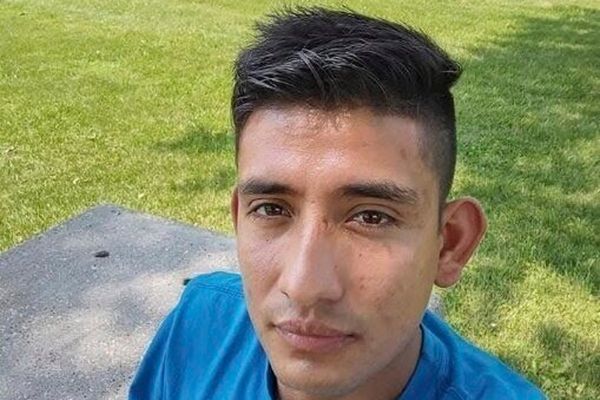
Every summer, the media executive Jaclyn Sallee travels from Anchorage to southwest Alaska to harvest salmon and share it with her Indigenous Alaskan, Inupiaq community. On that annual trip this July, Sallee was standing on the bank of King Salmon River when she received a distressing text message from one of her employees at Koahnic Broadcast Corporation, an Alaska Native media organization.
Donald Trump had signed into law the rescission of $1.1bn to the Corporation for Public Broadcasting (CPB), a non-profit corporation that funds more than 1500 local public television and radio stations around the nation. Shortly after, CPB announced that it will close most of its operations on 30 September. As the president and CEO of Koahnic Broadcast Corporation and the urban Indigenous radio station KNBA, Sallee has programs that depend on CPB funding.
Public radio offers a critical lifeline for rural Indigenous communities, many of whom lack access to landlines or cellular service. Native stations provide local news, emergency alerts about the weather, and language preservation.
When she returned to Anchorage a couple of days later, Sallee said she felt the weight of the Trump administration’s decision. “It was very sad to come to the realization that our funding is going to be lost, and there’s not a clear way to quickly make up that revenue,” Sallee told the Guardian. “I’ve been in the business a long time and have never been through this type of fierce objection toward public media.”
The programs that Sallee oversees and dozens of other Native radio stations are at risk of closure or reduction following the federal cuts. The Koahnic Broadcast Corporation will lose about $825,000 across all of their programs in the 2026 fiscal year that begins 1 October. Thirty-six tribal radio stations throughout the nation depend on more than $9.4m in CPB funding every year.
According to a recent survey of 23 tribal stations, by Native Public Media, a network for Indigenous radio and TV, CPB funding makes up between 30 to 100% of those stations’ annual budgets. Most of the respondents anticipate staff layoffs, and the majority of stations likely won’t be operational in a couple of years without CPB funding. Loris Taylor, president and CEO of Native Public Media, said that the federal cuts will have a “devastating and catastrophic impact on tribal stations”.
Amid the threat of reduced programming, Native public radio station managers in Alaska and Wisconsin say that they will continue to air local reporting and emergency alerts that are vital to their communities. When Typhoon Merbok hit Alaska and wiped out communications for the region, Sallee said that the local tribal radio station informed people “what they should be doing, what they should be observing. It really plays a different role in some communities. It also provides an educational role and a preservation role with Alaska Natives to preserve Indigenous languages and the stories of our traditions and heritage.”
Over the past month, the stations have aimed to retain local programming by raising money through emergency fundraisers and relying on local and national organizations that are seeking to fill the gap. The Anchorage-based KNBA hosted an emergency fundraiser that raised $82,000 for the station in four days. The non-profit Alaska Community Foundation created a statewide initiative to try to raise $15m altogether for local radio stations, and have so far received more than $3.5m in donations. WOJB out of the Lac Courte Oreilles reservation in Wisconsin has raised more than $13,000 in its summer pledge drive and general manager Karl Habeck said that he anticipates the amount raised will double before the end of the fundraiser. Native Public Media has also partnered with the Arizona Community Foundation to establish a fund that provides long-term financial support to Indigenous stations and another one that delivers emergency grants to those that relied on CPB funding.
Fundraising may determine whether crucial services continue to be delivered by local stations. Taylor worries that the slash in funding might impact the effectiveness of the Missing Endangered Persons emergency alert, which rolled out nationally 8 September. The alert system allows public and commercial radio stations to broadcast news about missing adults and minors in their local jurisdictions. Such an alert is especially important for tribal communities, since Native American women are 1.2 times as likely to experience violence in their lifetimes as white women. A disproportionate amount of Indigenous women also disappear every year, with more than 5,600 reported missing in 2024, according to the National Crime Information Center.
“The missing and murdered pandemic across Indian Country is so profoundly high that it’s going to be devastating if any stations were to close their doors, because then that alerting to their radio or TV stations will literally go away,” said Taylor. “That’s not a step forward. That’s a step backwards for an issue that’s considered a high priority across Indian Country.”
‘Big wait and see game’
At WOJB in Wisconsin, listeners can request songs, or alert the community that they lost their dog. “You just don’t see that anymore,” said Habeck. “We’re really a community organization more so than any other commercial or urban radio station.”
The public’s support of their organization has led to a surge in unsolicited donations over the past month, he said. But the individual donations have not amounted to the $240,000 that WOJB will lose from CPB starting 1 October, about half of the station’s operating budget.
An emergency fund will help WOJB stay afloat into 2026, but for most tribal stations “it’s a big wait and see game,” Habeck said. “Some small radio stations, they’re just going to shut the lights off or they’ll be on life support for 30 days, and then they’ll shut the lights out because they’re not gonna have any money.”
To cut costs, Habeck said that the station will likely find less expensive alternatives to airing NPR’s Morning Edition, and it will stop hosting community events and concerts. It may also have to sell equipment such as amplifiers that helped support large acts from out of town. He hopes that it’ll be able to continue airing the tribe’s pow-wow, which makes the three-day event accessible for tribal members with disabilities or elders who are unable to attend it in person, but that might be on the chopping block in the future. “Everything’s at risk right now,” Habeck said. “Nothing is safe.
The last thing that Habeck wants to do is to cut staff, and he hopes that the federal funding cuts will point the station in a new direction of being an authoritative voice that counteracts misinformation. He wants the station to prioritize impactful local reporting, such as its past coverage that helped halt a $1.5bn mine in 2015.
Koahnic Broadcast Corporation also decided to preserve local programming based on their research that their listeners most value information about weather patterns, local happenings, and underrepresented Indigenous voices, said Sallee. For instance, local reporters and producers are working on a forthcoming documentary about the impact that climate change has had on the Indigenous sustenance of seals. “What is most important is having ultra local voices in the community,” Sallee said, “reporting, and discussing what the issues are”.







